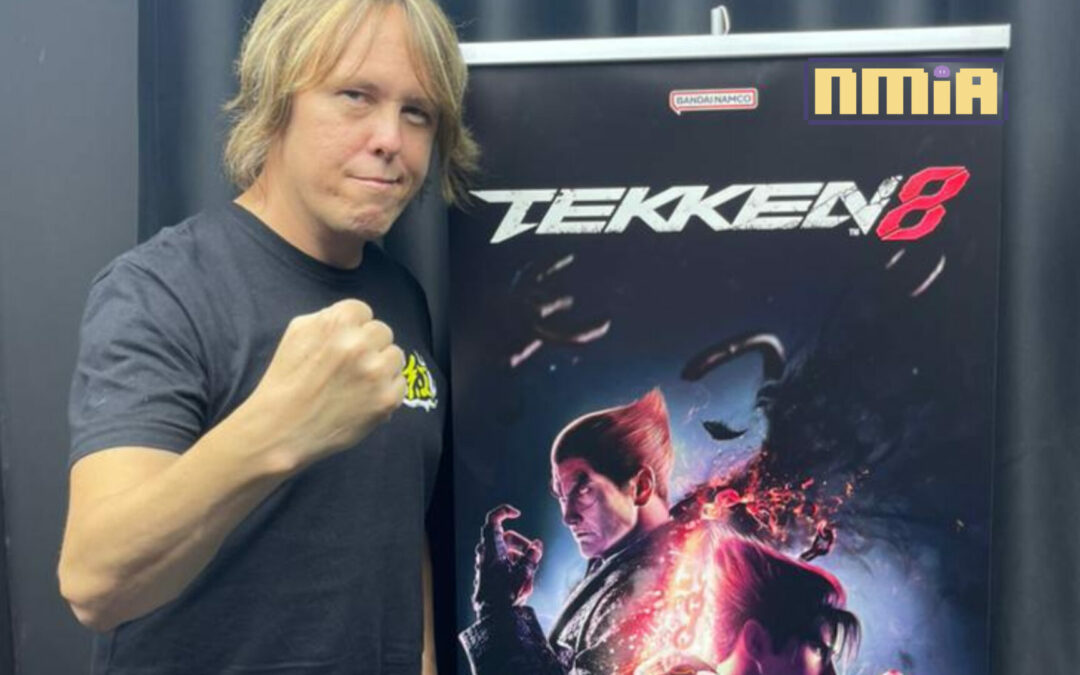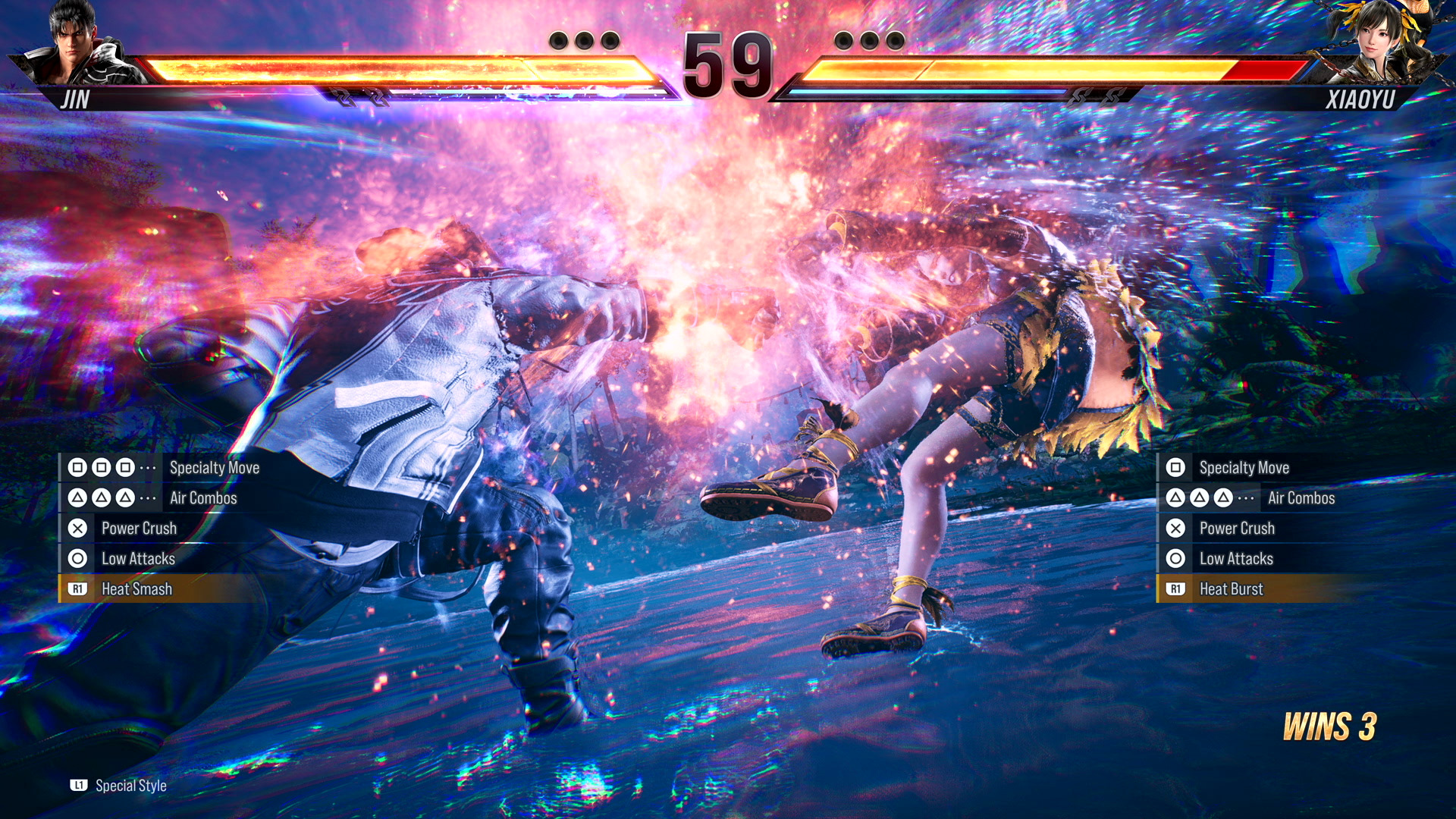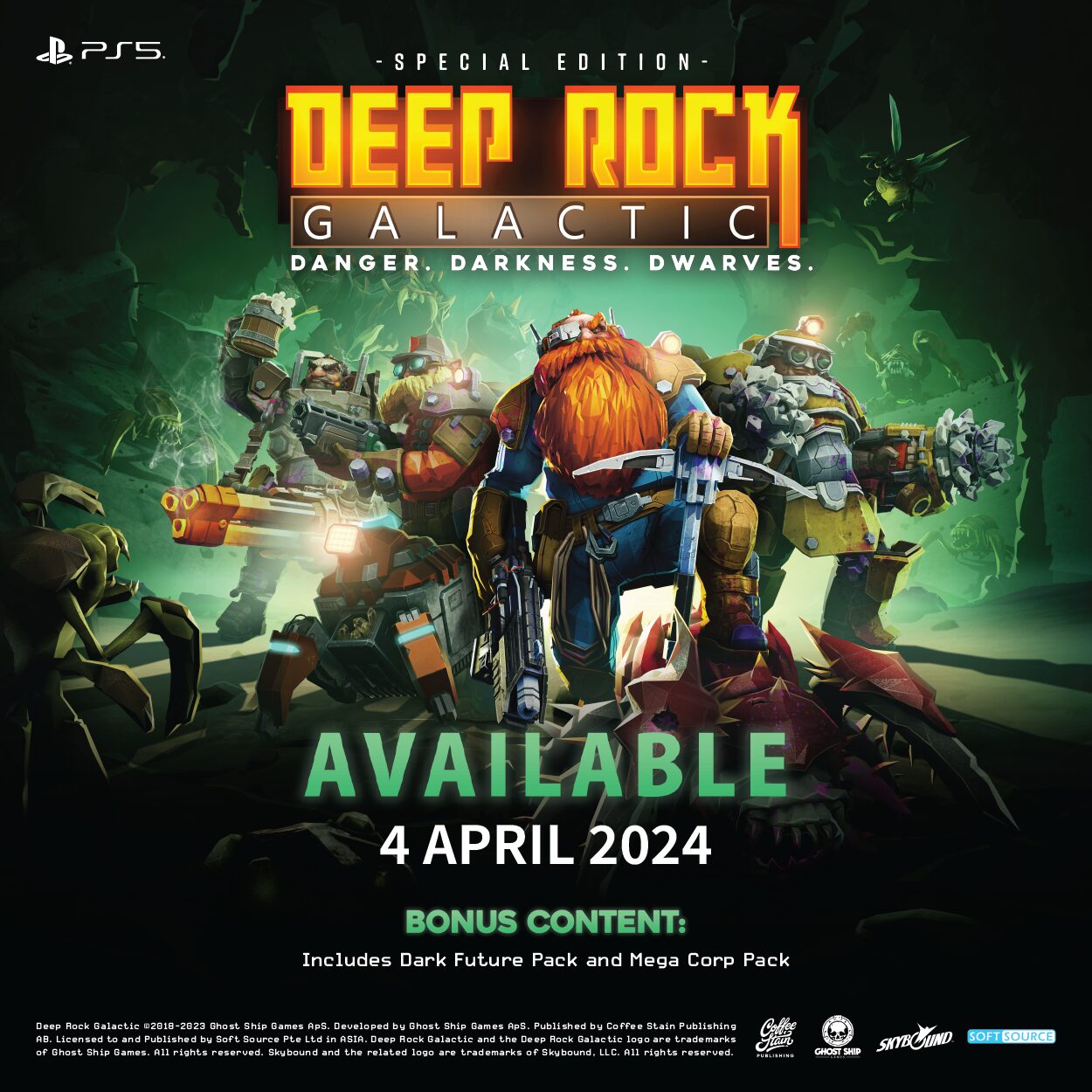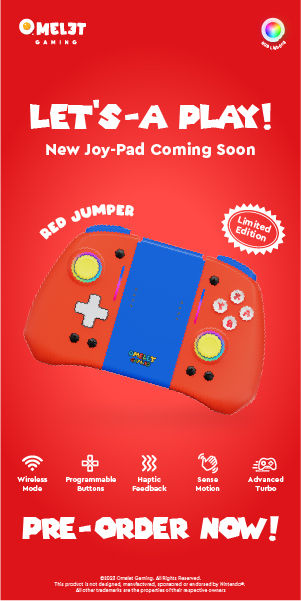Thanks to Bandai Namco Entertainment Asia, we had a chance to visit Thailand Game Show 2023, and had an interview with Michael Murray, the producer of TEKKEN project and Tekken 8. Here’s some question we’ve asked along with other SEA medias.
Q1) How did you ensure that both newcomers and long-term players could enjoy the game?
A1) Balancing the experience for newcomers and seasoned players in Tekken 8 was a significant challenge. The game has a rich legacy with techniques like wave dashing and precise timing for moves such as the electric fist, which advanced players cherish and expect to see in Tekken 8. We had to maintain these elements. At the same time, we aimed to make the game more accessible for newcomers without oversimplifying it.
In Tekken 8, we worked on streamlining various aspects. For instance, we refined movement mechanics, getting up from the ground, sidestepping, and back dashing. Our goal was to create a game that could be enjoyed by both advanced players and beginners. We also wanted to help newcomers progress quickly through the learning phases commonly associated with fighting games. These phases typically include finding a character you like, mastering fundamental skills like guarding and sidestepping, understanding your opponents, and eventually engaging in strategic battles with other players, which is where the real fun begins.
In Tekken 8, we introduced the Special Style, which allows players to easily perform powerful character-specific moves and aerial combos with the push of a button. This eliminates the need to delve into move lists and memorise complex sequences, making it more accessible for all players. You can quickly get a sense of how each character is meant to be played, and the game becomes more thrilling when executed correctly. Importantly, unlike our competitors, this feature can be toggled on and off at any time during a match to suit your preferences or skill level.
We also introduced a feature called My Replay and Tips, which simplifies the process of learning a character’s strengths and weaknesses. Instead of scouring the internet for information, you can use this feature to review your match replays and receive real-time advice. It suggests how you could have countered specific attacks or improved your performance, making it a valuable tool for enhancing your gameplay.
Another innovation is the Ghost State, allowing you to create a virtual opponent to practise against, highlighting areas where you may be lacking in your gameplay. This alternative perspective provides a fresh way to analyse your strengths and weaknesses.
Overall, the practice mode in Tekken 8 has evolved significantly, offering a range of features, including My Replay and Tips and combo challenges, aimed at helping players improve their skills and enjoy the game to the fullest. These all features just make the game become easier to pick up, as well as learning new characters.

Q2) Can you provide insights into the new characters we can expect to see in Tekken 8, and do you have a personal favorite among them?
A2) It’s quite a challenging question to answer. As you can see, we’ve brought back characters from Tekken 7, and so far, the only entirely new character we’ve introduced is Azucena. However, I want to emphasize that even the returning characters and those we introduce have received extensive design updates with new moves and costumes, which make them feel almost like entirely new characters. These changes bring a wealth of new content and playstyle options to the game, thanks to features like the heat system and the addition of brand new moves.
For instance, Azucena is a fresh addition from Peru, specializing in mixed martial arts (MMA). The heat system promotes aggression in gameplay, offering various benefits when activated, including enhanced character-specific moves and the ability to dictate the tempo of a match.
Regarding returning characters, many beloved favorites have made their way into Tekken 8 from the franchise’s extensive roster. It’s always exciting for fans to see if their favorites have made the cut. As of now, Azucena is my personal favorite since she is the only new character we’ve officially announced. Whether there are more new characters on the horizon, it’s challenging to predict at this point.

Q3) Tekken 8 is reintroducing old characters, including Jun. It’s a recurring discussion in every Tekken game, but how does the team decide when to include or bring back characters, especially with so many editions?
A3) Storytelling plays a pivotal role in each installment of Tekken, providing an enjoyable experience for all players. Take Tekken 7, for example, where we introduced Akuma into the game and had to carefully integrate him into the existing narrative. However, in Tekken 8, our primary focus is on continuing and expanding the story from where it left off in Tekken 7.
The decision to include or bring back characters is multifaceted. When considering a character’s return, we evaluate their relevance to the storyline. In the case of Jun, who had been missing for many years, her absence had generated a lot of curiosity and questions from fans. It was evident that her return was not only important but necessary to advance her story and explore her relationships, especially with Jin and Kazuya, within the current narrative.
Furthermore, it’s not just about including characters, but also ensuring a diverse range of fighting styles and playstyles in the character roster. We take into account the uniqueness of their martial arts and how popular they are. Player data, which reflects the character choices made in story mode and during matches against other players, is invaluable for making these decisions. We strive to maintain a balanced character roster that appeals to different preferences, whether players enjoy the characters in the context of the story or in competitive battles. Our goal is to create an inclusive experience that caters to various player interests and story arcs.
Q4) It’s great to see Tekken Volleyball making a return in Tekken 8. What influenced the decision to bring back this mini-game?
A4) We’ve always had a tradition of releasing Tekken in arcades first, refining the gameplay, and then adding console-exclusive bonuses like story modes and movies. Tekken fans have come to expect a wealth of bonus content in the series. This time, we focused on modes that enhance the player’s skills, such as the Arcade Quest and the My Replay and Tips feature.
We didn’t want to offer just a straightforward tutorial because it may not be the most enjoyable experience for players who are already familiar with the game. For example, Arcade Quest serves as a tutorial but also incorporates story elements and other engaging content. However, we do have limited resources for adding new features, so we had to make choices among the popular modes that have been part of Tekken’s history.
Bringing back Tekken Ball in Tekken 8 was partly motivated by the fact that it had been quite some time since this mode was last featured in the series. Many fans had been requesting its return. Additionally, it happened to align well with our plans for the online lobby, where we wanted to include different areas for players to relax. Creating a beach area for the lobby and incorporating Tekken Ball felt like a seamless fit. So, the decision to reintroduce Tekken Ball was influenced by these factors, and it seemed like the perfect moment to do so.


Q5) Fahkumram was a highly popular character in Tekken 7, particularly in Thailand. Could you share your thoughts on the character’s reception?
A5) Certainly, Fahkumram is one of my personal favorite characters. The character design for Fahkumram was a collaborative effort between myself and the director, Nakatsu, with Harada often contributing to character designs as well. Not everyone may be aware, but I have a deep passion for Muay Thai, which I’ve been practicing for over a decade. We had Bruce in previous Tekken games, but his official style was kickboxing, not Muay Thai. So I was determined to create a proper Muay Thai character. The challenge was not just to make Fahkumram visually striking but also to ensure that his fighting techniques were authentic.
To achieve this, we looked to a popular Thai fighter named Saenchai PK Saenchai, who was also well-known in Japan. My own gym in Japan had a good relationship with PK Saenchai, so we were fortunate to bring him in for motion capture. Yoshitari Nakata, another member of my gym, was also involved in the process. With all these elements in place, we set out to create a Muay Thai character that would resonate with fans.
The response to Fahkumram was varied among long-time Tekken fans. Some preferred to have Bruce return because they had a strong attachment to the character. However, newer players to the series seemed to really appreciate Fahkumram. He brought a unique playstyle to the game, spoke authentic Thai, and his backstory of being a prisoner added to his appeal. Additionally, the timing of his announcement was significant. We revealed him at the GWT finals in Thailand, and this connection to the Thai setting contributed to his popularity.
As for his appearance in Tekken 8, many fans have expressed their interest, and I would love to see him return soon. However, I can’t provide a specific answer regarding his inclusion in Tekken 8 at this point.

Q6) What are your thoughts on the decades-long, ever-growing story of Tekken, and what impact do you think it has on player experiences?
A6) The evolution of Tekken’s story has been quite a journey. In the early Tekken games, it was more about having these characters fighting, but it was challenging to connect with the fighters without understanding why they were fighting or having some background information. That’s why, in the early days, we provided various stats about the characters, like their age, height, and even details such as Kazuya’s hobby of collecting sneakers.
Back then, when you completed the arcade mode, you were rewarded with a high-quality CG movie that conveyed a story. At the time, the story wasn’t necessarily cohesive; it was more about motivating players to choose different fighters. As we progressed through the series, the story mode started to become more coherent.
Around Tekken 5, we introduced interactions between characters at the beginning of matches. Tekken 6 continued with the scenario campaign mode, which had a more comprehensive storyline. It was in Tekken 7 that we finally integrated a proper CG movie with seamless transitions into battles. We made a conscious effort to create a coherent storyline that clarified who had won the Iron Fist tournament and what actually happened.
By Tekken 7, we were quite satisfied with the outcome of the story. Players seemed to enjoy it. However, there were some story arcs that had been left hanging for a long time, like the one involving Jun, which was also explored in the Tekken anime. Now, our goal is to have a central storyline that encompasses all the characters and their interactions. We also include character episodes for individual character side stories.
For Tekken 8, the challenge is to continue the story in a way that makes sense and to find a way to include everyone’s favorite characters without forcing them into the central narrative. This is a delicate balance because each character is beloved by fans, and they want to see their favorites in action. So, transitioning from the original purpose of the story to its current state has been a complex journey, but one that we’re committed to delivering for our dedicated fan base.
Q7) Can you talk about the process of balancing characters in Tekken to ensure that none of them are too overpowered?
A7) The process of character balancing has evolved over the years. In the past, we would release a game, and players would essentially have to accept its state until the next installment. Now, with the ability to update games on the fly, we can patch issues as they arise. However, because there’s a competitive scene built around Tekken, like the Tekken World Tour and other tournaments, we can’t change the game too drastically. Pro players don’t want to invest time in learning the game only to have it change significantly shortly thereafter. Therefore, we keep updates to a minimum and focus on releasing a polished game from the start.
Traditionally, having an arcade version of the game made it easier to balance because we could release it in arcades, where many people would continuously play and provide feedback. We could also consider creating intermediate updates, like a 7.5 installment, with playtesting before releasing the final version. However, with Tekken 8, we are going straight to console release worldwide, and we don’t have the luxury of an arcade version. So, the challenge is to balance it effectively before anyone gets their hands on it.
A significant advantage we have is that most of the team members have been working on Tekken for over a decade, with many, including myself, for more than 20 years. This extensive experience allows us to understand the game’s theory and how characters should play. We even have former pro players on our balancing team who work on the game before it’s available to the public. As a result, the game is in a relatively good state even before we begin playtesting.
To ensure balance and get early feedback, we conducted a Closed Access Test (CAT) where we took the game to events like Combo Breaker and EVO, where knowledgeable fighting game players could play the game and offer feedback. This helped ensure that highly experienced players didn’t break the game in some particular way. We also conducted a Closed Beta Test (CBT) to involve a broader audience, including average and novice players who might discover issues that weren’t apparent to top-level players.
What we’ve found is that opening the game to a wide audience allowed us to see that pro players embraced the heat system and its associated mechanics, while some intermediate or novice players found it less intuitive. This feedback allowed us to streamline certain aspects of the game’s design to make it more accessible to everyone, not just the pros. Balancing, in this sense, is not only about maintaining fairness but also ensuring that the game is enjoyable and comprehensible for all players.

Q8) With more players using controllers instead of arcade sticks, do the different platforms (controller, arcade sticks, keyboard) that players use influence the move list design in Tekken 8?
A8) Tekken was initially born in the arcade, where many players used arcade sticks. However, this changed notably around Tekken 3 when the game gained popularity in Europe and other regions. With the decline of arcades, more players began using gamepads. Nowadays, you even have players using hitboxes or keyboards. However, the fundamental way the game is played remains consistent across different input devices. Therefore, we haven’t had to make significant changes to the game’s move list based on the controller type being used.
Q9) The Ghost Battle system in Tekken 8 has generated a lot of excitement. Do you believe it will help intermediate players improve in Tekken 8?
A9) Yes, I believe the Ghost system in Tekken 8 can significantly help intermediate players improve their skills. This Ghost system is quite different from previous iterations. It’s more adaptive and dynamic. Instead of just remembering specific aerial combos or characteristics, it learns from your overall gameplay style. If you frequently use wave dash, it learns to wave dash, and if you often backdash, it learns to backdash. This system helps players identify their strengths and weaknesses by watching their ghost fight against other players. It’s a valuable tool for self-improvement.
For instance, even within our development team, when I played against another developer using special style only, I found that it made me focus more on my techniques and fundamentals. I had to think about what moves to use and when to use them strategically. So, the special style system encourages players to hone their fundamental skills, which they may sometimes overlook. This, in turn, helps intermediate players get better and enjoy Tekken 8 to the fullest.

Q10) Accessibility is a prominent topic in gaming. How is Tekken 8 ensuring that everyone can have fun with the game?
A10) Accessibility is indeed a crucial consideration. Some players may think that making a game more accessible is a positive step, while others might perceive it as “dumbing down” the game. Striking the right balance is essential. In Tekken 8, we’ve introduced the special style, which is an optional feature. It’s not meant to turn an inexperienced player into a pro overnight. Instead, it allows players to engage with the game and enjoy it even if they are new to Tekken or fighting games in general.
Special style doesn’t replace the core Tekken experience but provides an entry point for those who might find the traditional Tekken mechanics challenging. This way, players of different skill levels can enjoy the game, whether they’re veterans or newcomers. We’ve aimed to strike a balance that caters to a wide range of players without alienating anyone.
Q11) What are the most significant changes since the first Closed Network Test (CNT) of Tekken 8?
A11) We’ve made several important changes since the first CNT of Tekken 8. One significant change is to the heat system. Initially, it had visible stocks, but we found that the meta was stabilizing around launching opponents into Heat immediately and using Heat Dash for wall combos. So, we changed the presentation of the heat system by removing the visible stocks and introducing a standard timer, making it more intuitive.
We’ve also made adjustments to combos related to Heat Dash and Heat Smash, dialing them down a bit. Additionally, we made enhancements to the Special Style system. Initially, it used square, triangle, circle, and cross buttons (on PlayStation controllers) for various types of attacks. However, we found that there were limitations when it came to certain situations like punishing or blocking. So, after the CNT, we added directional inputs to some of the buttons in the Special Style, allowing players to access different moves by pressing left, right, or no button at all in conjunction with a single button. This change significantly expanded the available moves in Special Style, providing players with better options for various in-game situations.
We’ve also introduced the ability to map buttons for L3 and R3, a feature many players have been asking for. In terms of game balance, we looked at characters that weren’t being used as much during the CNT and made changes to improve their techniques or playstyle. These adjustments have been aimed at creating a more balanced and enjoyable gameplay experience.
Q12) Tekken 8’s marketing seems to alternate between intimate character trailers and larger ones, like the Gamescom trailer. How do you decide how many characters to show in each trailer?
A12) With 32 characters in Tekken 8, we need to find the right opportunities to showcase them all before the game’s release. Sometimes, it means giving certain characters their individual trailers, while at other times, we have big opportunities like major gaming events where we can show multiple characters in one trailer. The decision depends on the timing, the context of the event, and the story’s progression. For example, if we’re releasing a story trailer, it’s essential to have the characters relevant to that narrative revealed in advance. It’s a challenging task to plan how to reveal all 32 characters with the limited time we have before release.
Q13) What’s your favorite character design and costume design in Tekken 8?
A13) It’s tough to pick a favorite because the character designs and costume designs in Tekken 8 are outstanding. However, if I had to choose, I might say Jin’s design is my favorite. I’ve always been a fan of Devil Jin, and this time, the way he partially controls his abilities with one wing and the red glow effect is exceptional. Additionally, the attention to detail with feathers and effects is remarkable. The whole team did an excellent job with Jin’s design. And if you’ve seen the statue of Jin, you’d understand why I find it so impressive.







